The Subaru Impreza WRX STi Team Arai bodyshell
The reference of the bodyshell is 51500, including all accessories and stickers. But it is not new: it was already used on TT-01E and DF-03Ra chassis kits under the reference 51364 due to a different livery.
58528 / 58538 Subaru Impreza WRX STi Team Arai
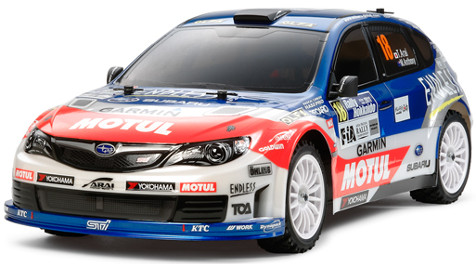
58426 / 58430 Subaru Impreza WRC 08
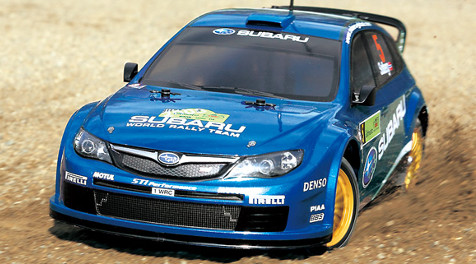
Photos © Tamiya
For my liking the “standard” legendary blue Subaru livery with golden rims is much nicer than the over complicated Team Arai livery. But the fact is that the later faithfully depicts the car that won the 2011 Hokkaido Rally (IRC Championship) driven by Toshihiro Arai, a famous Japanese driver.
Obviously, the previous owner had problems when painting the bodyshell because the white and metallic blue areas were not respected: from there, it became very difficult to correctly apply the stickers, probably explaining why the decoration was not finished. It is not possible to repair this unless using chemical treatments I don't want to go into. That's why I decided to consider this bodyshell as a “runner” good enough to make the car look correct and realistic. So I won't spend too much time on it, but first of all, I decided to add the rear wing even if it doesn't belong to the official Arai livery: I really like the typical Subaru look of this wing. Second step, I added the stickers that were left over:
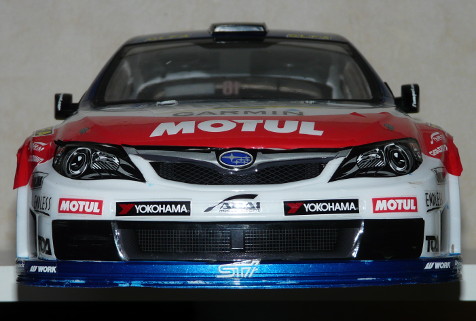
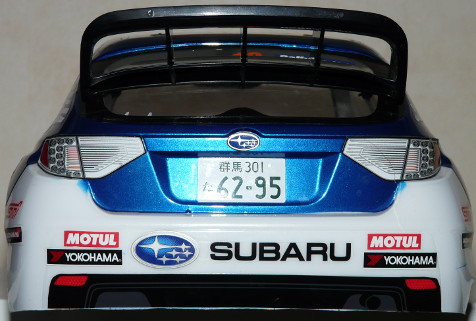
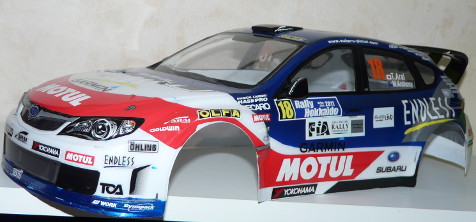
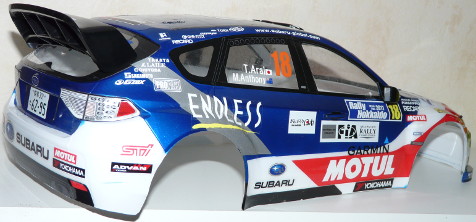
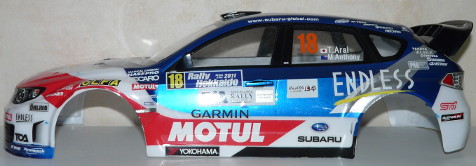
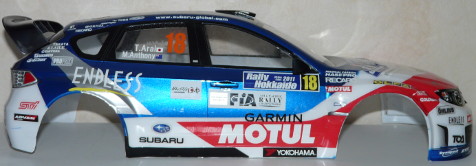
What a billboard! The trickiest part relies on the side Endless sponsor (a Japanese brake manufacturer) because each letter requires to be separately cut and because of the wheel arches. Nothing difficult, but it does take several hours to clear the sticker sheet.
We are left with the body holes that were badly made, despite the molded marks on the bodyshell. It is pretty much impossible to refill a hole in lexan, so the solution here means to properly re-drill the bodyshell where it was meant to be.
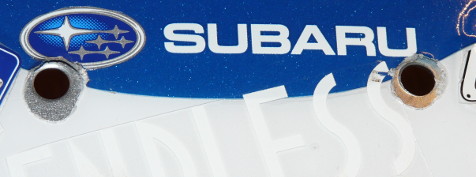
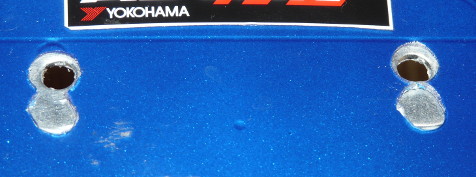
As you can see, the problem is that what should be perfect round holes are now oval “empties” that can't help properly fit the bodyshell on the chassis. So I used a system of eyelets placed inside of the bodyshell and fixed with duct tape: these eyelets can be found in any hardware store, just check the inner diameter is 5mm.
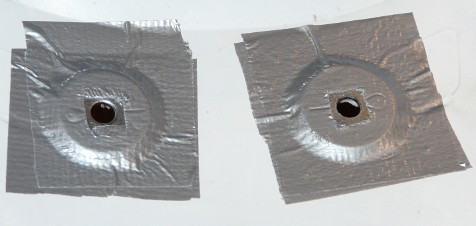
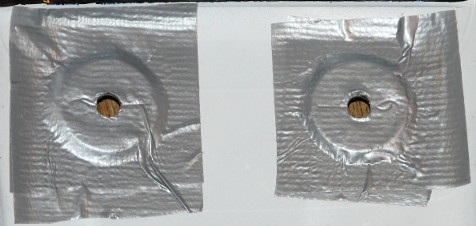
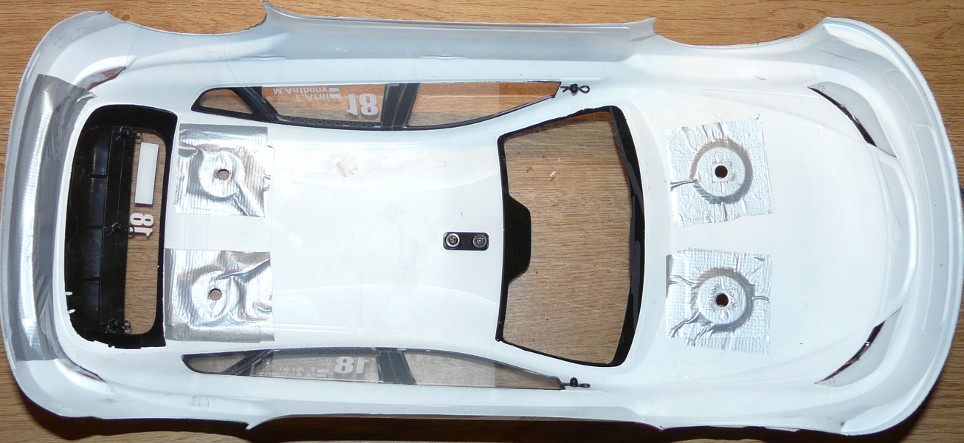
This is a functional repair, it was never meant to look nice. It will be enough to properly fit the bodyshell on the chassis and to make the model look better. Final result:
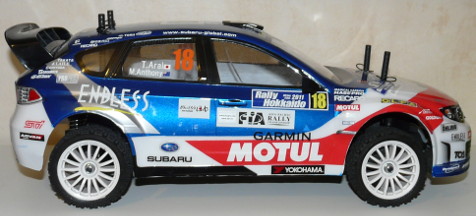
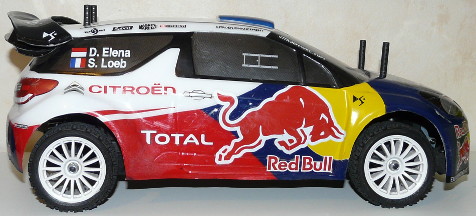
Last interesting detail: the body mounts have the exact same location as many other Tamiya chassis, such as the TB-01 (thus the DS3 WRC bodyshell here), DF-03Ra, TA-01, TA-02, TT-01 and TT-02... So the choice for rally bodyshells is vast.
First runs
As usual, I went to the club tracks to test this new model, and before it hit the dirt, I shot some photos:
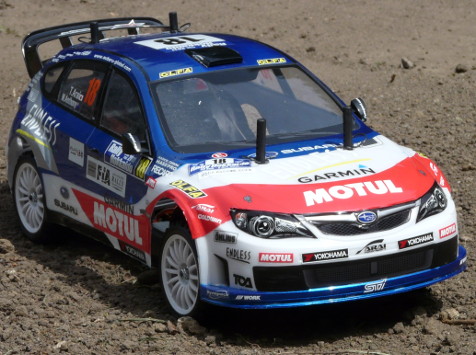
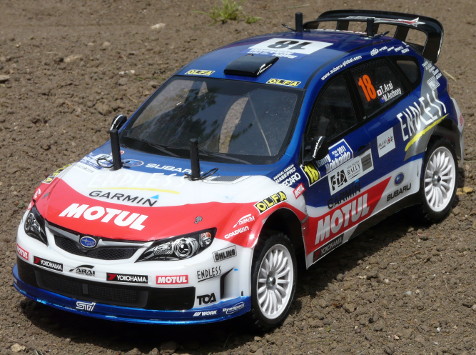
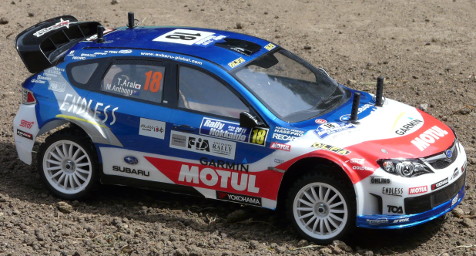
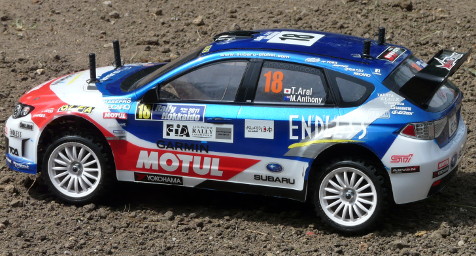
Even if the hatchback version is not the prettiest Impreza in my opinion, a Subaru bodyshell on a rally chassis always looks great ![]() . And yet, before running the car on the dirt, I first ran it on asphalt for a few laps. Even though the rally block tires and soft suspension are not appropriate for the surface, the chassis felt great to drive in these conditions: very well balanced when drifting and so quiet because of the belt-driven transmission, I immediately loved the “rally-cross” driving style. In addition to checking everything was running well on the chassis, the first test on asphalt revealed that the 13.5T motor is a limit not to overcome for rallying. In fact, I think a 17.5T would suit better and I will probably swap the motor for the next runs.
. And yet, before running the car on the dirt, I first ran it on asphalt for a few laps. Even though the rally block tires and soft suspension are not appropriate for the surface, the chassis felt great to drive in these conditions: very well balanced when drifting and so quiet because of the belt-driven transmission, I immediately loved the “rally-cross” driving style. In addition to checking everything was running well on the chassis, the first test on asphalt revealed that the 13.5T motor is a limit not to overcome for rallying. In fact, I think a 17.5T would suit better and I will probably swap the motor for the next runs.
After the asphalt as a starter, my chassis was offered dirt as the main course. I admit that one of my very first interrogations was about the suspension: on asphalt, it felt soft, but the ride height creating a lot of chassis roll, the suspension could only look like it was soft. Once on the dirt, the suspension does not feel soft, it actually feels smooth. In concrete, the chassis or the wheels never feel like being shaken by the uneven ground because the dampers do a fantastic job. You can immediately feel the consequence of such a great suspension at the radio wheel because the chassis feels very easy to control in any circumstances.
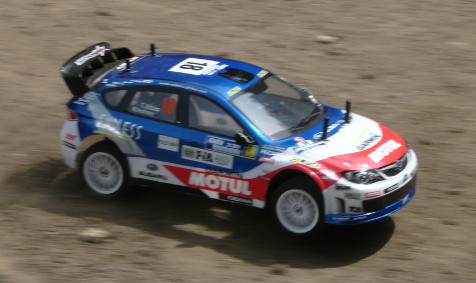
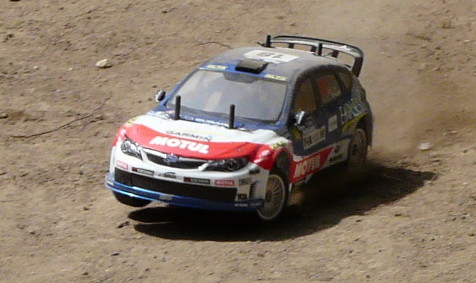
Another of my interrogations about this chassis was the front motor: this location suggests better steering due to the added weight on the front wheels, but as a consequence, a potentially light thus moving rear drivetrain. Just as my TA-03F chassis on asphalt, the XV-01 is perfectly balanced: in fact, the XV-01 is remarkably balanced and easy to control as long as the 4 wheels are on the ground. As for jumps (moderate, this is not a buggy), the chassis front immediately dives and you can't help it whatever you try. So you will prefer the “flat” rally stages, not the crazy flying 1000 lakes rally stages ![]() .
.
To keep going into comparing the XV-01 and TA-03F, here are these two photos:
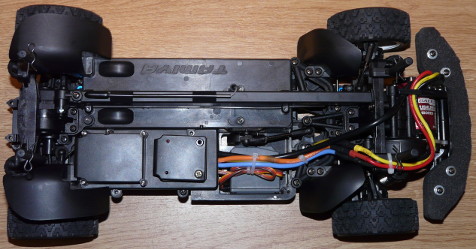
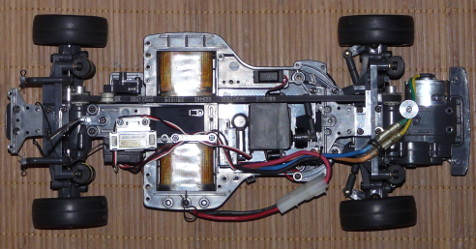
Apart from the front motor and the belt-driven transmission, 15 years and everything else make these two chassis different. Yet, even though the transmission, suspension, drivetrains, battery location... well, actually, even though these two chassis do not share anything at all, I couldn't help thinking about the TA-03F while I was driving the XV-01 on asphalt. For the second run, I replaced the rally tires with slick tires and fitted harder dampers for a much longer run on asphalt. Except with much higher range 4x4 touring chassis, I rarely drove a chassis with such a precise front drivetrain: even with the TB-03 chassis (which is a fair candidate for comparison with the XV-01), the typical 4x4 understeering handling can be experienced. The perfect balance of the XV-01 chassis is amazing and the driver never feels like struggling with the car to keep control: everything feels “easier”, just like with much higher grade racing chassis (as long as you don't run crazy motors to flirt with their limits... and yours).
Anyway, the XV-01 chassis deserves the name “crossover”, even if I can't say how it performs for drifting. On asphalt, which would be the TC Pro version, it compares to a seriously modernized and improved TA-03F, offering a very modern and high-grade handling, easy and amazing to control. On dirt in rally mode, this great performance is the same, with the addition of a remarkably smooth and efficient suspension that also looks realistic because of the chassis roll. For a better handling, you may want to sacrifice the chassis roll using slightly stiffer springs at the front and slightly softer springs at the rear, but keeping the kit #900 thick oil. Another characteristic of the XV-01: probably because of the chassis weight balance, the car runs perfectly steady at high speed in straight lines even on dirt and it is extremely swift and agile in the tight corners you often find in rally stages.
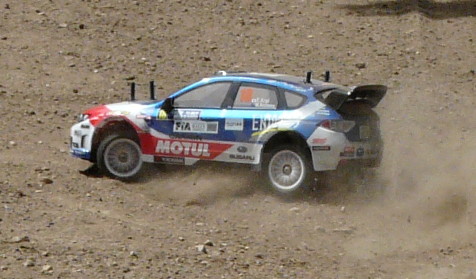
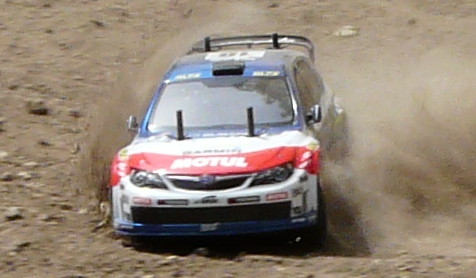
With the XV-01, Tamiya successfully managed to repeat what they achieved 15 years earlier with the TA-03F, that is designing a perfectly well-balanced, performing and easy to drive chassis. The XV-01 does not only compare with the TA-03F because of the front motor and belt-driven transmission: the overall chassis characteristics and handling create the comparison. However, you could only fit rally bodyshells on the TA-03F because it was not recommended to drive it on dirt: with the XV-01, you can fit the same rally bodyshells (standard wheelbase only) and you can drive it in real rally stages. The perfect rally machine ![]() .
.
A word about the pebble and dirt protections: the main gear cover looks like the TRF201 gear cover. Unfortunately, it suffers the same dustproof efficiency concern, even if the problem is less pronounced here. A silicon joint on the outside or a balloon to cover the gear cover (!) and the motor plate will solve the problem and save your rally experience. After several runs with a balloon as an additional protection, my chassis did not suffer any new intrusion of dust or pebble in the gears. But whatever you may try, the trays for electronics and battery are designed to pick up dust and pebbles.
Related articles:




